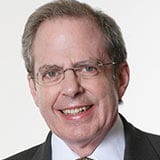To QE or not QE, that is the question. And once again the Fed heads out to Jackson Hole, and may well draw up another plan to kick start this economy, observes Stephen Leeb of Leeb Income Performance.
With days to go until the Fed gathers for its annual economic policy symposium in Jackson Hole, Wyoming, the market is awash in speculation about the possibility of a new policy announcement.
The minutes of the last FOMC meeting released yesterday have done more to convince market participants that the policymakers can—and will—step in with additional easing. But the question of when and how still remains.
Memories of the Jackson Hole symposium of two years ago are still fresh in the minds of many investors. That’s because it was at that meeting that QE2 was announced. Conjecture was rampant at this time last year, when memory of that announcement was even fresher, with much speculation about the possibility of a QE3.
That, as we well know, did not happen. Instead, the Fed introduced Operation Twist (and not at Jackson Hole, we might add, but later, at their regularly scheduled FOMC meeting).
Returning to the present, if there were many doubts about whether the Fed would ease now, some of them were dispelled by the minutes of the last FOMC. What they offered was confirmation of the generally more positive attitude of the FOMC toward further easing: “Many members judged that additional monetary accommodation would likely be warranted fairly soon unless incoming information pointed to a substantial and sustainable strengthening in the pace of the economic recovery.”
We also learned that “many participants expected that such a program could provide additional support for the economic recovery both by putting downward pressure on longer-term interest rates and by contributing to easier financial conditions more broadly.”
In addition, some participants noted that “a new program might boost business and consumer confidence and reinforce the Committee’s commitment to making sustained progress toward its mandated objectives.” But one Committee member is still of the opinion that additional accommodation would likely not be effective in improving the economy.
We will learn more from Chairman Bernanke when he delivers his Jackson Hole speech. It’s important to note that possible policy actions range from extending the current low rate commitment to adjusting the interest rate on reserves, and do not necessarily include a full-fledged bond buying program.
In the meantime, expectations are running high for not just the US but for many of the world’s central banks to ease as well. The UK, China, Brazil—all continue to use different variations of the same policies to stimulate their economies. And even Europe, where austerity still officially rules, is said to be considering capping the yield on Spanish bonds. This would mean buying those bonds in unlimited amounts—a de facto quantitative easing measure.
Who benefits from the easing? Risky assets first and foremost. If you need proof, just look at the stock market’s performance. The S&P 500 index is up 11.5% year-to-date, and set its four-year high of 1,426.68 last week.
Precious metals and other commodities also are beneficiaries of the central bankers’ easing mood. This explains the current strength in gold, as well as the strong relative performance in oil over the last three months.
Bonds, in the meantime, continue to benefit from QE expectations and yields remain low. Our recommendations for income and growth, therefore, primarily involve high-quality dividend stocks. Gold is an essential asset class in this environment as well.
Subscribe to Leeb Income Performance here...
Related Reading:
The Dollar's Surprising Future



















